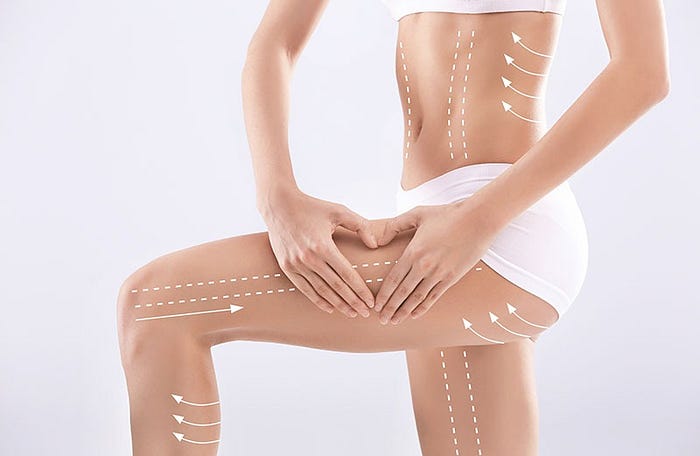Body contouring treatments are an excellent option for those looking to refine their shape, eliminate stubborn fat, or tighten sagging skin. However, to achieve the best results, it’s essential to be well-informed about what the procedure entails and how to prepare for it. This Body Contouring Treatment In Dubai guide outlines the key factors to consider before undergoing body contouring treatment to ensure a safe and successful experience.
Understanding the Basics of Body Contouring
Body contouring encompasses a range of non-invasive and minimally invasive procedures designed to target areas of the body with stubborn fat, loose skin, or uneven contours. Common methods include:
- Cryolipolysis (fat freezing): Uses controlled cooling to destroy fat cells.
- Ultrasound or radiofrequency treatments: Break down fat and stimulate collagen for skin tightening.
- Laser lipolysis: Minimally invasive and uses laser energy to liquefy fat cells.
Each technique has unique benefits, making it crucial to choose the one that aligns with your goals and physical condition.

Is Body Contouring Treatment Right for You?
Not everyone is a suitable candidate for body contouring. Before proceeding, consider the following:
Ideal Candidates
- Individuals near their ideal weight but with stubborn fat deposits or mild skin laxity.
- Those who maintain a healthy lifestyle, including regular exercise and a balanced diet.
- People with realistic expectations about what the treatment can achieve.
Who Should Avoid It?
- Pregnant or breastfeeding women.
- Individuals with certain medical conditions, such as uncontrolled diabetes, active infections, or skin disorders.
- Those with significant amounts of loose skin may require surgical options instead.
Preparing for Your Body Contouring Treatment
Proper preparation can enhance the effectiveness of the procedure and minimize potential risks.
Consult a Qualified Practitioner
Seek a consultation with a licensed and experienced practitioner. During this session, they will:
- Evaluate your medical history and overall health.
- Discuss your goals and recommend the most suitable treatment.
- Explain the procedure, potential risks, and aftercare requirements.
Avoid Certain Medications and Activities
Before treatment, your practitioner may advise you to avoid blood-thinning medications or supplements to reduce the risk of bruising. Additionally, you should refrain from tanning or exposing the treatment area to the sun.
Stay Hydrated
Proper hydration supports your body’s natural healing processes and improves the effectiveness of treatments like fat freezing or ultrasound therapies.
What to Expect During the Procedure
Body contouring treatments are generally straightforward and performed in an outpatient setting.
Non-Invasive Methods
For non-invasive procedures, you’ll be comfortably positioned while the device is applied to the target area. Most sessions last between 30 minutes and an hour, with minimal discomfort.
Minimally Invasive Methods
For treatments like laser lipolysis, a local anesthetic may be used. A small incision is made to insert the device, which liquefies fat cells. Recovery time is slightly longer but still much shorter than traditional surgery.
Recovery and Aftercare
Understanding the recovery process is crucial for maximizing results and avoiding complications.
Immediate Effects
After treatment, you may notice mild redness, swelling, or tenderness in the treated area. These effects typically subside within a few days.
Long-Term Care
- Follow your practitioner’s aftercare instructions carefully.
- Avoid strenuous activities for a few days, especially after minimally invasive treatments.
- Maintain a healthy lifestyle to preserve results.
Results and Realistic Expectations
Body contouring treatments are designed to enhance your natural shape, not replace significant weight loss or surgical interventions. Results often appear gradually as your body eliminates fat cells or collagen production increases.
Key Points to Remember
- Full results may take weeks or months to become visible.
- Body contouring treatments complement a healthy lifestyle but aren’t a substitute for exercise or dieting.
- Multiple sessions may be required to achieve desired outcomes.
Questions to Ask Before Treatment
During your consultation, ask these important questions to ensure you’re making an informed decision:
- What treatment is best suited for my needs?
- How long will the procedure take?
- Are there any potential risks or side effects?
- What aftercare steps should I follow?
- How long will it take to see results?
Conclusion
Body contouring treatments offer a safe and effective way to address areas of concern and enhance your confidence. By understanding the procedure, preparing adequately, and having realistic expectations, you can maximize the benefits of your treatment. Always consult with a qualified practitioner to ensure your safety and satisfaction with the results.






Comments